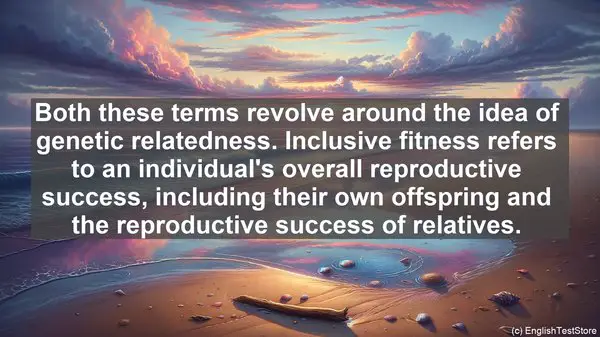Introduction: The Intricacies of Evolutionary Psychology
Welcome to another insightful lesson. Today, we’re delving into the fascinating world of evolutionary psychology. As we explore this field, we often come across words that may seem similar but have distinct meanings. Let’s dive in!
1. Adaptation vs. Exaptation
Adaptation refers to a trait or characteristic that has evolved over time to serve a specific function. On the other hand, exaptation is when a trait that originally served one purpose is co-opted for a different function. Understanding the difference between these two terms is crucial in comprehending the complexity of evolutionary processes.
2. Homology vs. Analogy
When studying the similarities between species, we often encounter these terms. Homology refers to traits that are similar due to a common ancestor, while analogy refers to traits that are similar but not due to a shared ancestry. Distinguishing between these two concepts is vital in deciphering evolutionary relationships.
3. Microevolution vs. Macroevolution
Microevolution focuses on changes within a population over a relatively short period, while macroevolution looks at larger-scale changes, such as the formation of new species. Both are integral to understanding the broader picture of evolution.
4. Altruism vs. Cooperation
While these terms are often used interchangeably, they have distinct meanings. Altruism refers to a behavior that benefits others at a cost to oneself, while cooperation involves individuals working together for mutual benefit. Recognizing the nuances between these two concepts is crucial in studying social behavior.
5. Eusociality vs. Sociability
Eusociality is a complex social structure found in certain species, characterized by reproductive division of labor and cooperative care of offspring. Sociability, on the other hand, refers to a general tendency to associate with others. Understanding the differences between these terms helps us grasp the intricacies of social organization in the animal kingdom.

6. Inclusive Fitness vs. Kin Selection
Both these terms revolve around the idea of genetic relatedness. Inclusive fitness refers to an individual’s overall reproductive success, including their own offspring and the reproductive success of relatives. Kin selection, on the other hand, specifically focuses on the reproductive success of relatives. These concepts are vital in understanding the evolution of social behaviors.
7. Polygyny vs. Polyandry
These terms pertain to mating systems. Polygyny is when a male has multiple female partners, while polyandry is when a female has multiple male partners. Recognizing the distinctions between these two concepts is crucial in studying mating strategies and sexual selection.

8. Phenotype vs. Genotype
Phenotype refers to the observable traits of an organism, while genotype refers to its genetic makeup. Understanding the relationship between these two concepts is fundamental in studying the expression of traits and the role of genes in evolution.
9. Monogamy vs. Monogyny
Monogamy refers to a mating system where an individual has only one partner throughout their lifetime. Monogyny, on the other hand, is when a female has only one male partner. These terms are essential in understanding the diversity of mating systems in the animal kingdom.
10. Phylogeny vs. Ontogeny
Phylogeny is the evolutionary history and relationships between species, while ontogeny refers to the development of an individual organism from fertilization to adulthood. Distinguishing between these two concepts is crucial in studying both the broader patterns of evolution and the intricacies of individual development.
